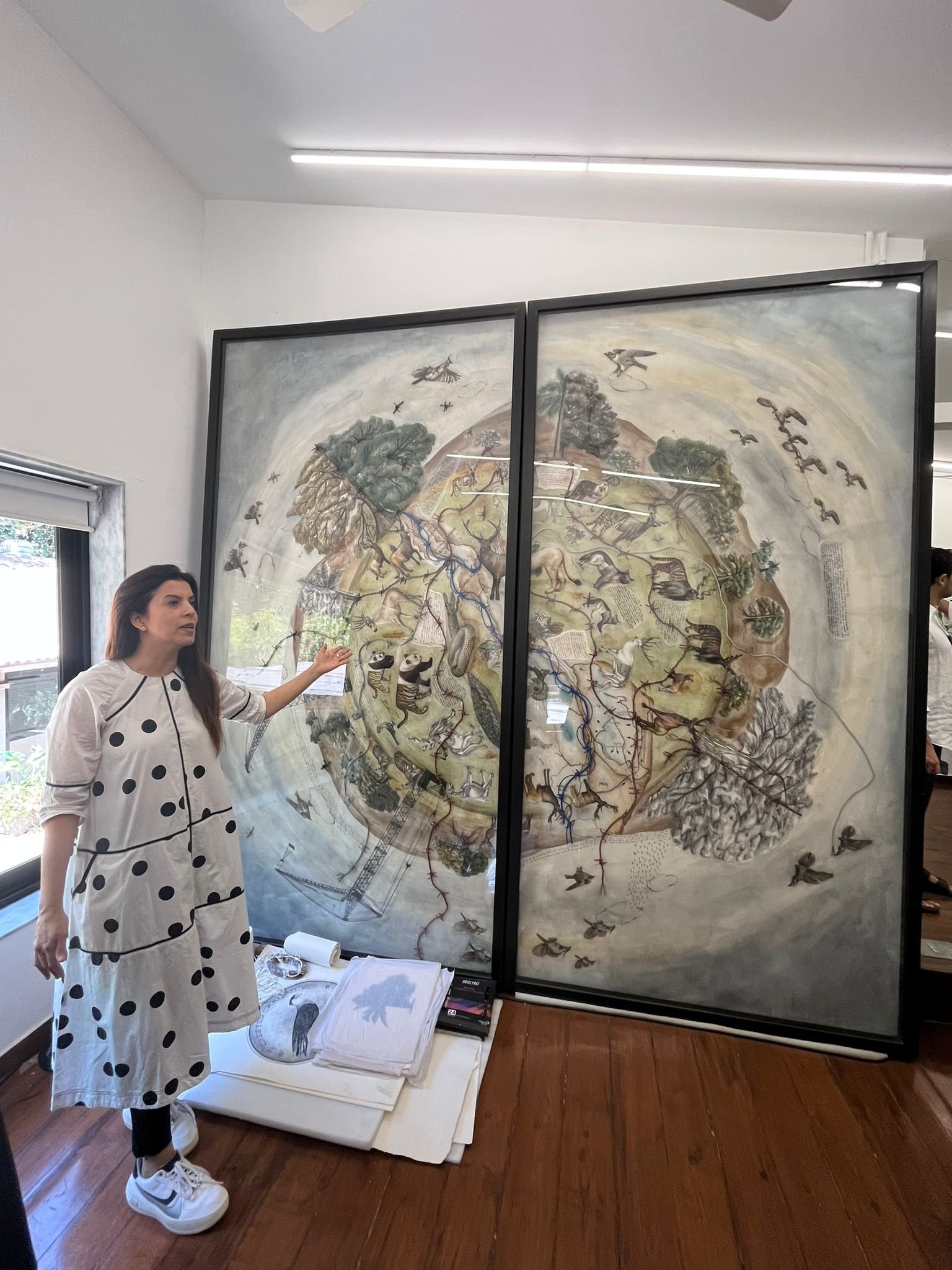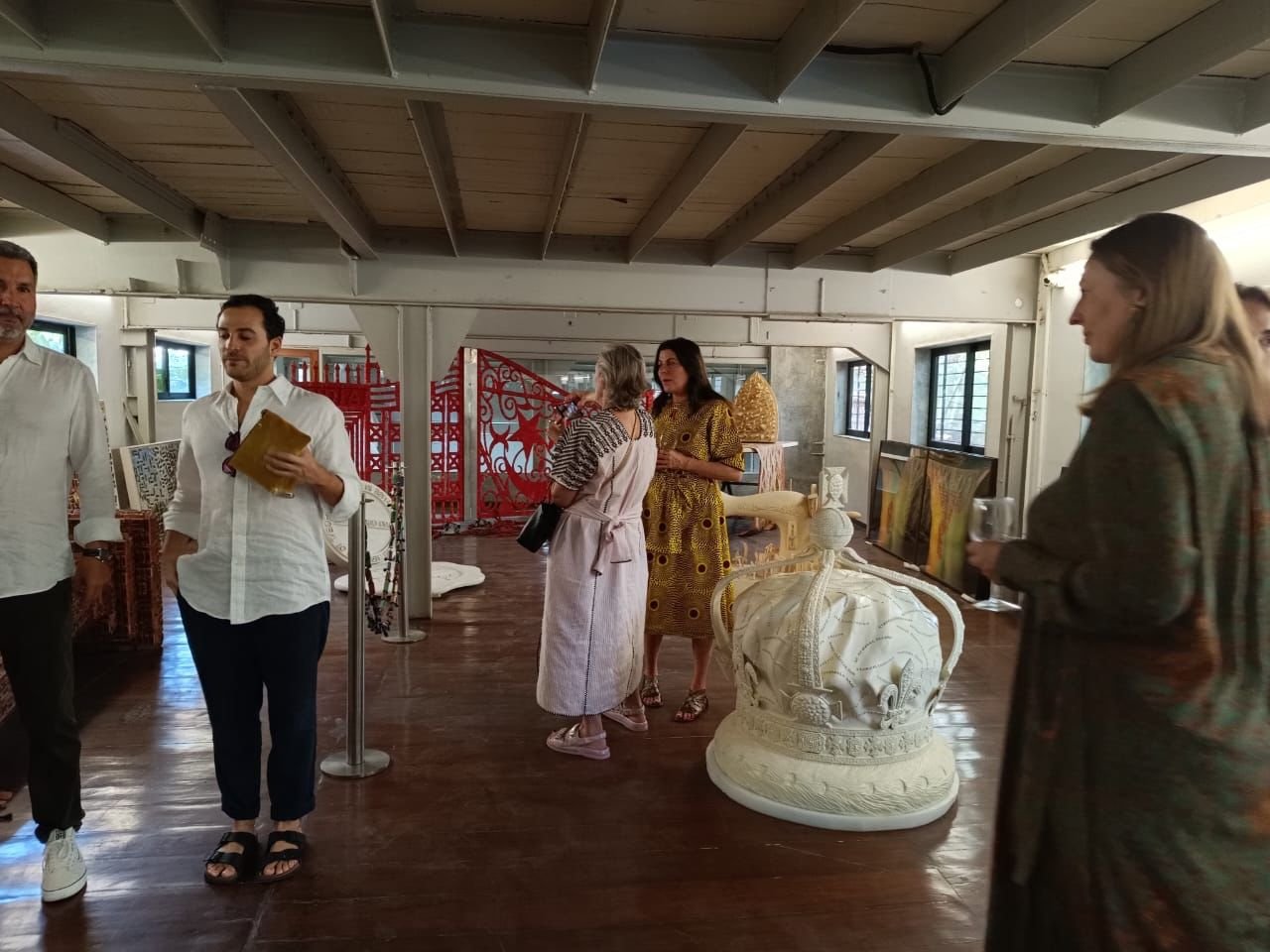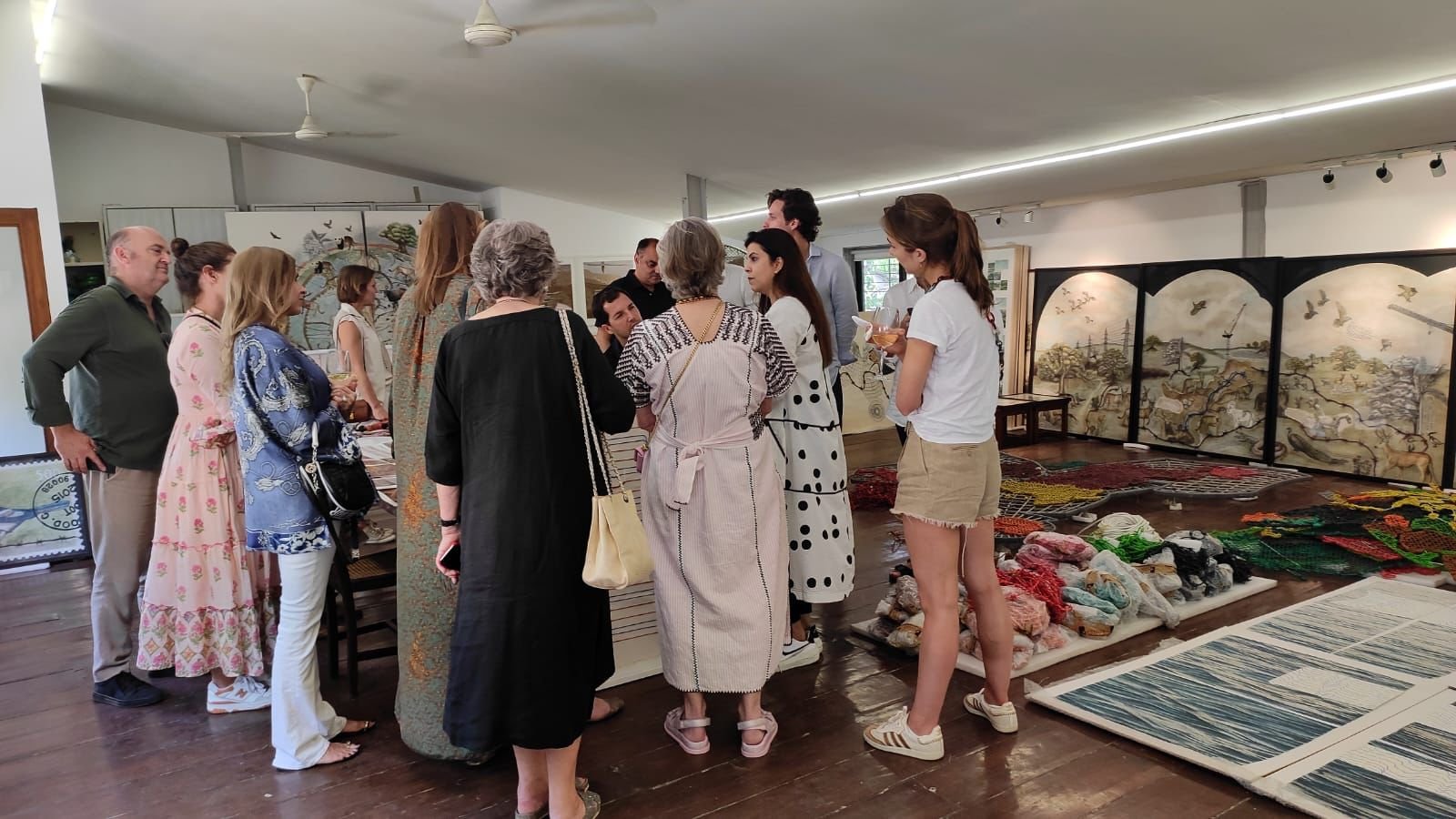Jitish & Reena Kallat’s Studios
We were thrilled to accept the artists Reena and Jitish Kallat’s invitation for a studio visit and a luncheon while we were in Mumbai. We traversed some of the most colorful areas of the city to reach their ateliers.
A word about Jitish
Over the last two decades, Jitish Kallat's art has consistently explored the concepts of time, sustenance, recursion, and historical memory. He often blends the dense urban landscape with the vast cosmos, and his work spans different scales of time and focus.
Starting from small details like the texture of fruit skin or the contents of a shirt pocket, Kallat's art can zoom out to capture the bustling city or even venture into the depths of space.
Some of his pieces reflect on the fleeting present while others reference significant historical moments. By constantly shifting between different orders of magnitude, Jitish’s art examines the self, the city, the nation, and the universe, juxtaposing the ephemeral and the perpetual, the everyday and the historical, and the microscopic and the telescopic.
Change has been a constant in his life, the artist’s work reflects this by not being tied to consistency for consistency's sake. Some of his works relate to each other, but it can take years for that connection to be apparent. Some works inspire further inquiry and contribute to a cyclical rhythm. Certain themes such as time, birth, death, and mortality remain fundamental.
Jitish was also the curator and artistic director of the Kochi Murizis Biennale in 2014.


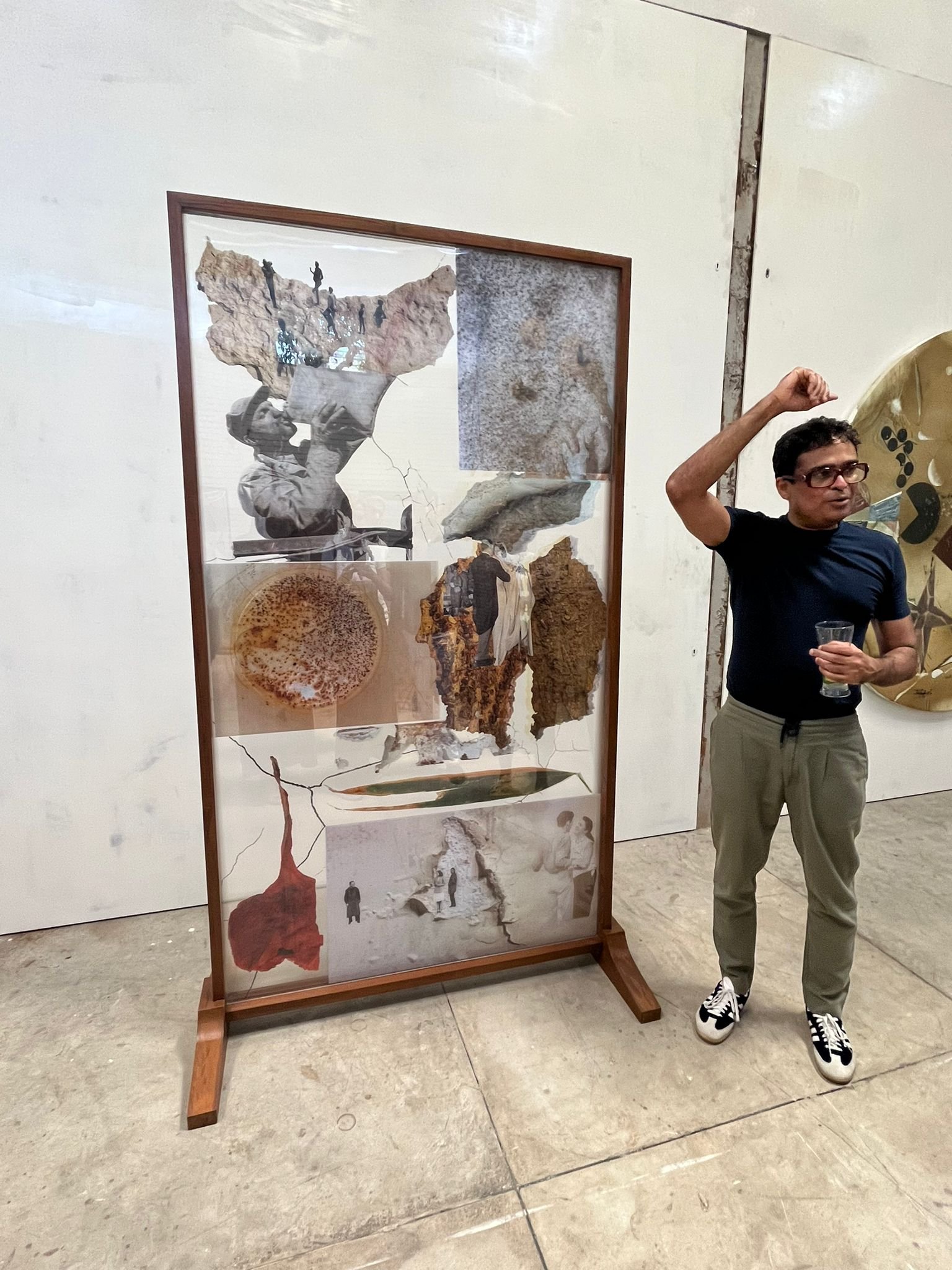

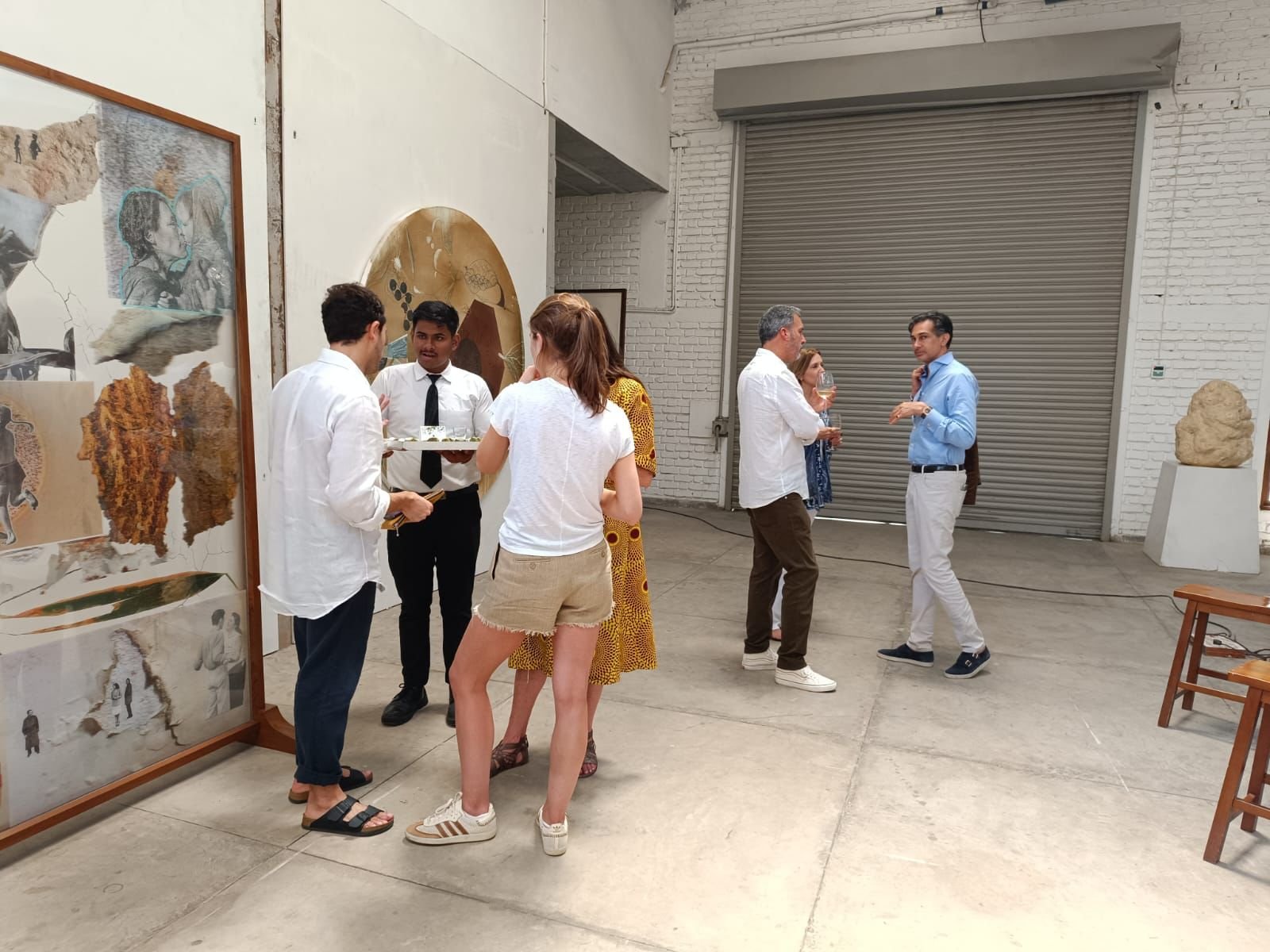
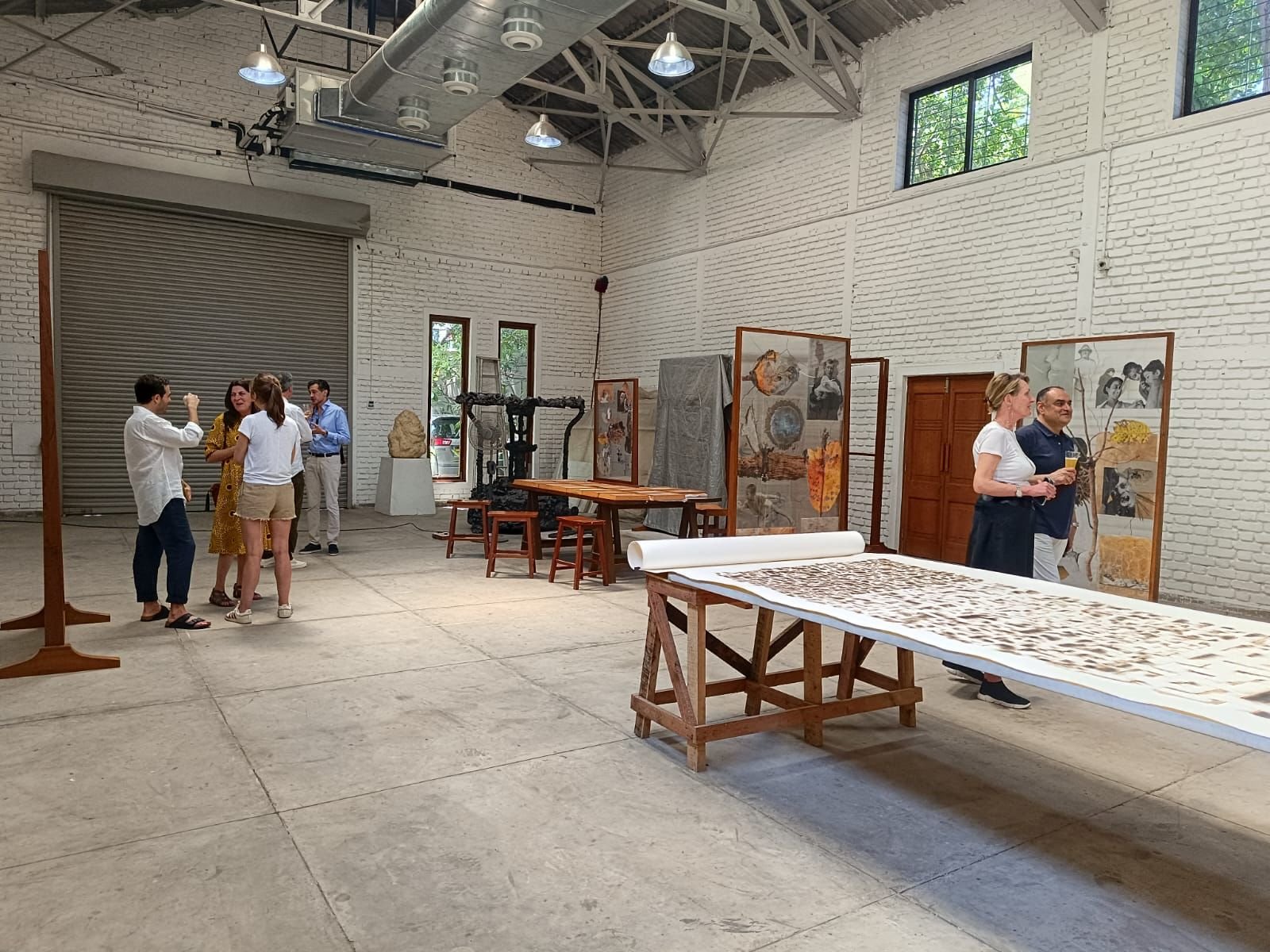
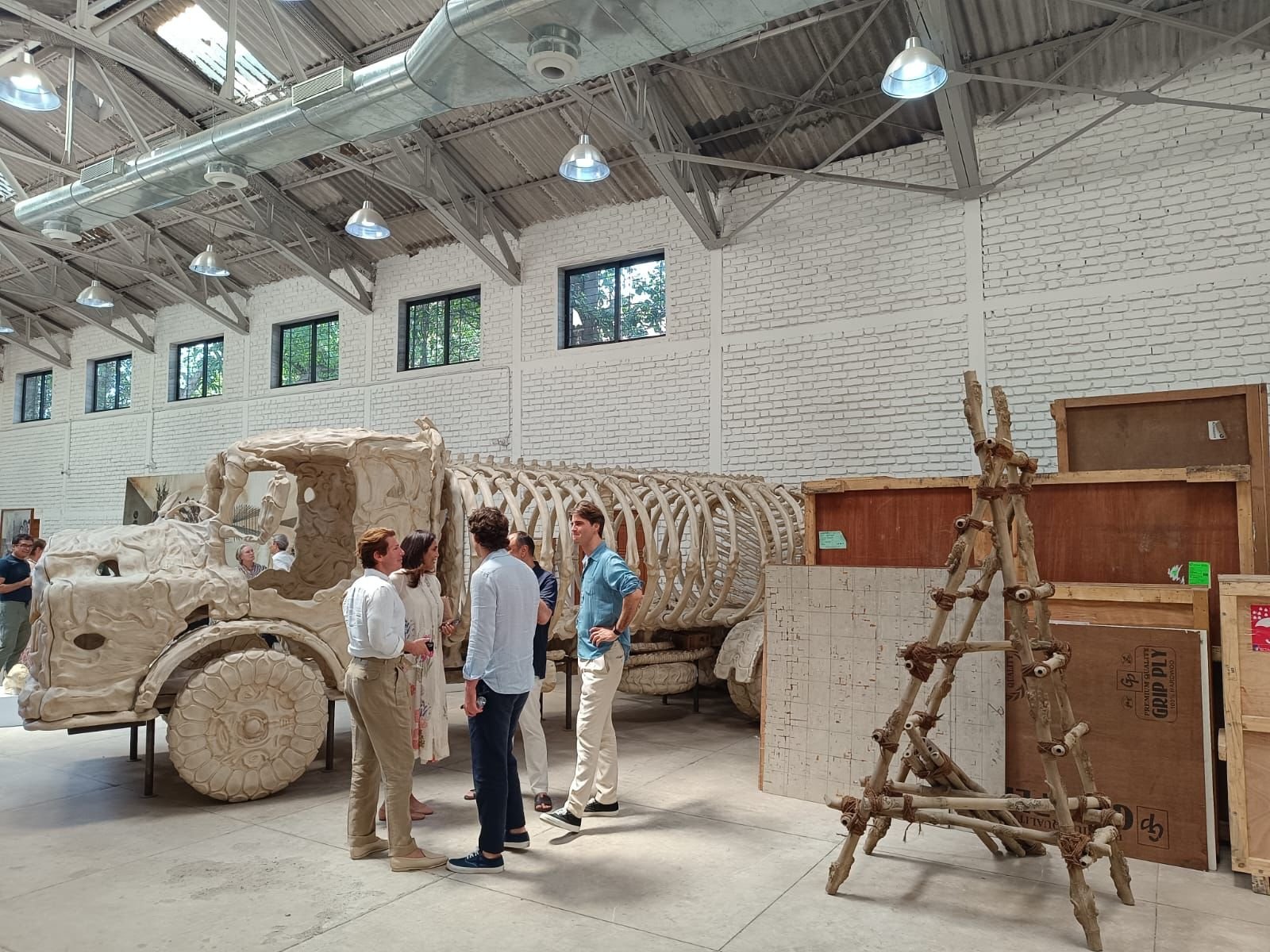

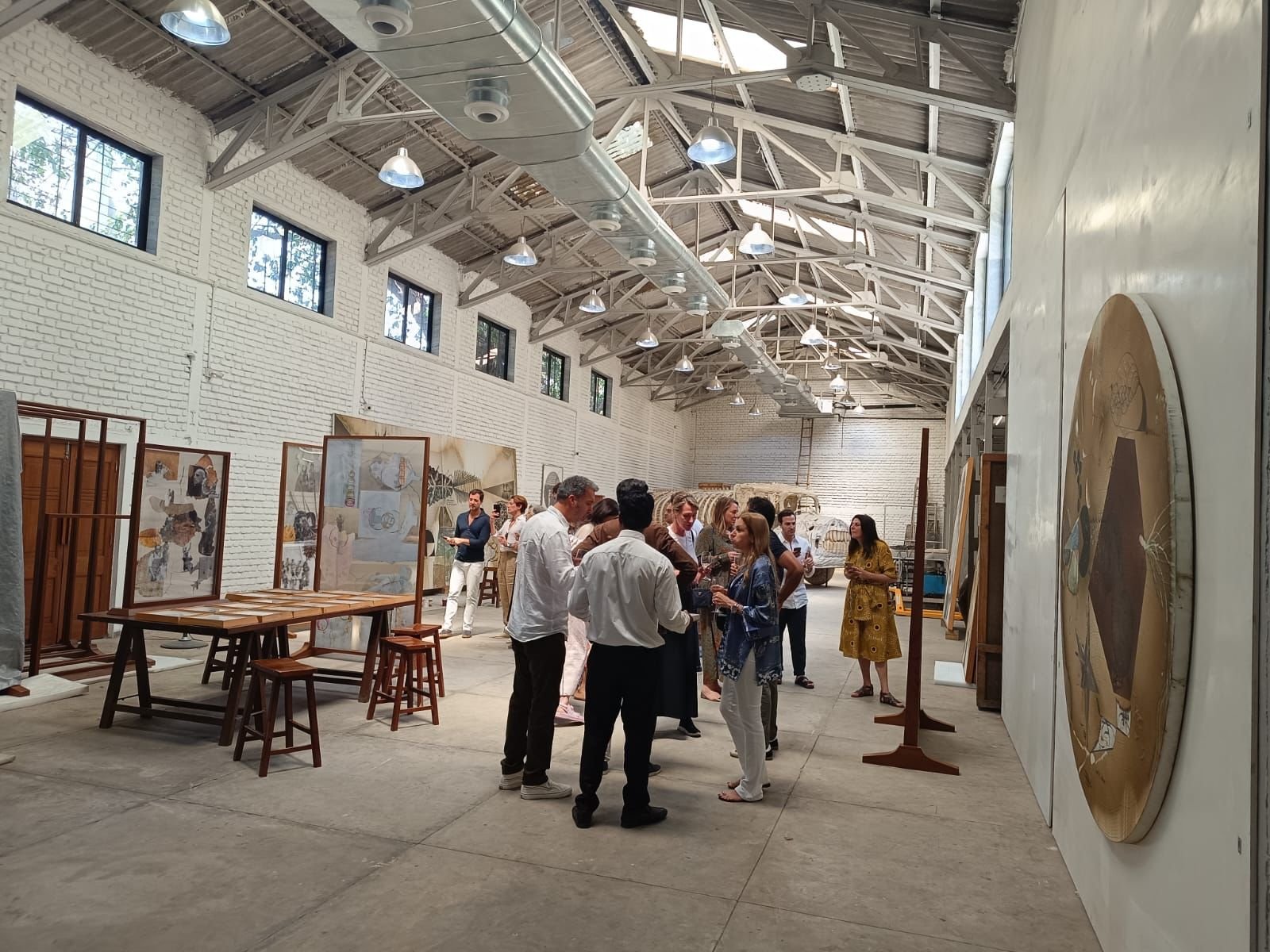


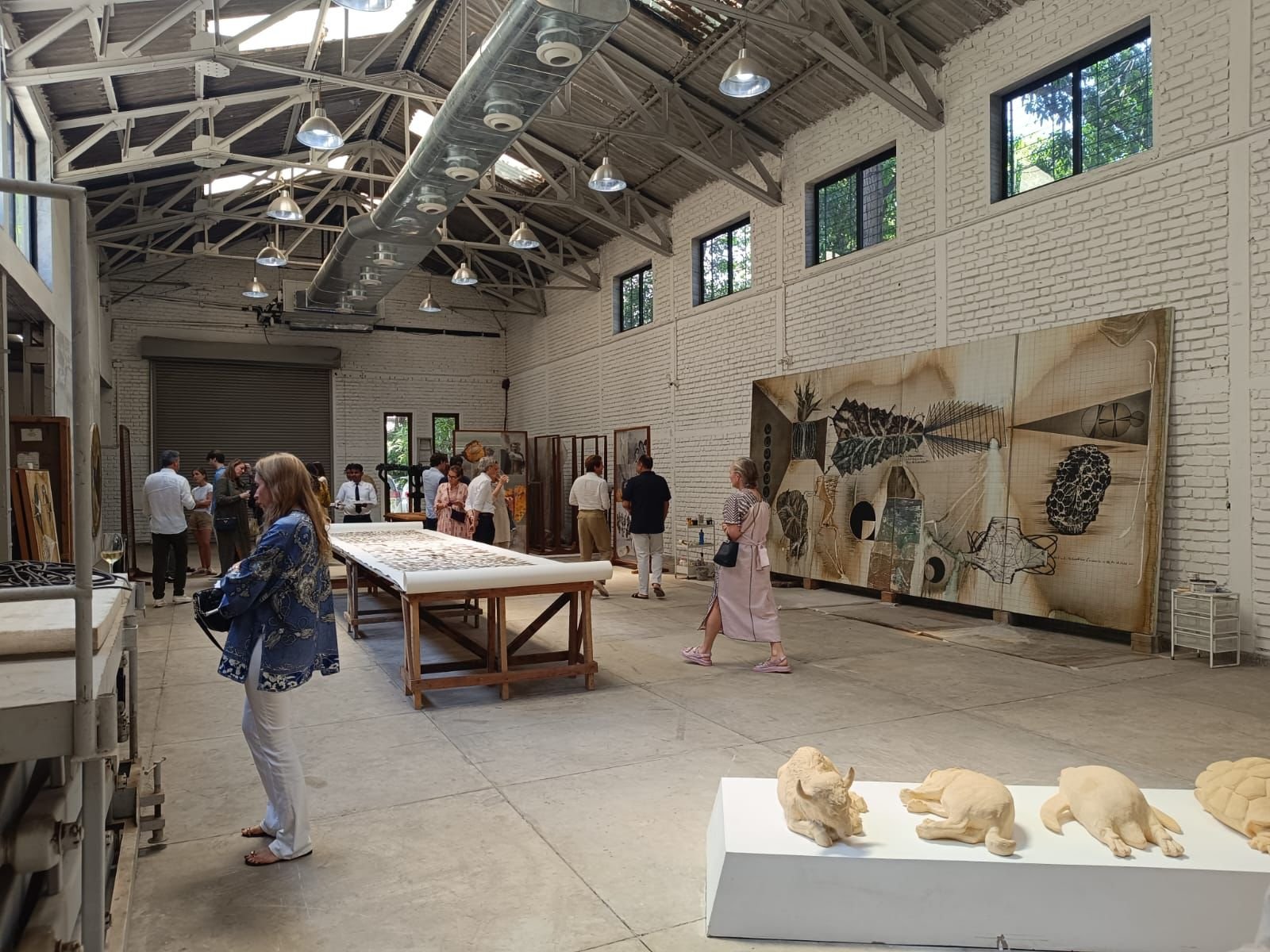
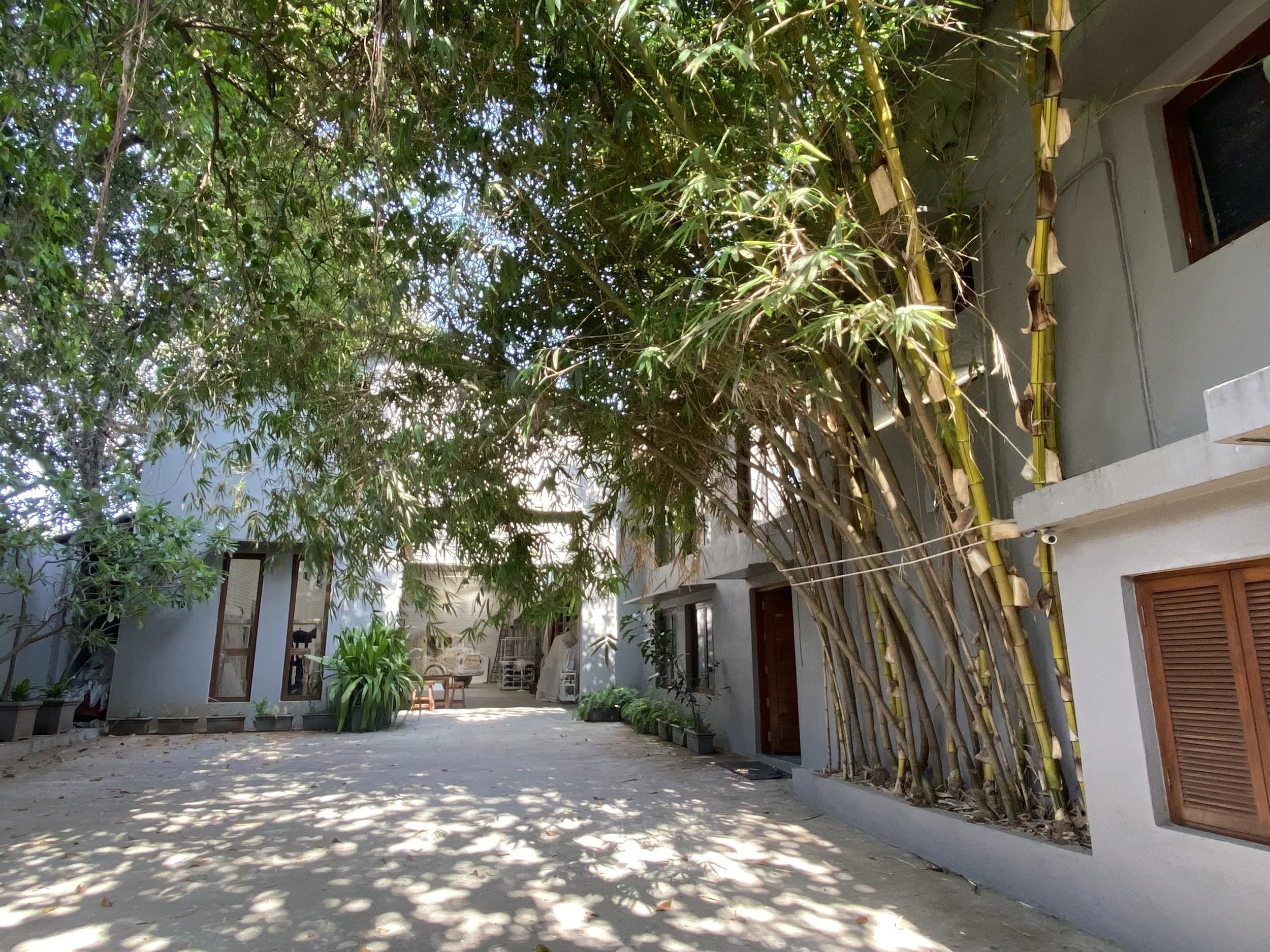

A word about Reena
Reena Kallat’s work, for its part, focuses on the interconnectedness of ideas that may seem to contradict one another, such as barriers and mobility, porosity and fissures, memorialization and amnesia, and the promise and illegibility of national legal documents.
The violent partition of India, which her paternal family experienced, has led Reena to explore the effects of political and social borders on people, land, and nature. Her research delves into the histories of migration, shared natural resources, and disappeared people.
Reena uses the figure of the hybrid as a symbol of resistance against divisive national narratives and borders. She highlights the idea that barriers can be subverted using electric cables that resemble barbed wire, and that contact leads to exchange and fusion. Her work also explores the notion of memory, not just what we choose to remember but how we think of the past.
She uses the motif of the rubber stamp, which represents the bureaucratic apparatus, to examine official records of lost or disappeared people, objects, and monuments, and re-inscribes them in the collective imagination.
Her interest in foundational legal texts is apparent as she emphasises universal principles of freedom and equality, while also examining their tendency to create an enemy for their own sustenance.
By exposing the limits of individual and societal perception, Reena reveals blind spots that hinder shared vision. Through her work as an artist, she hopes ultimately to inspire collective action towards a more inclusive and just society.
